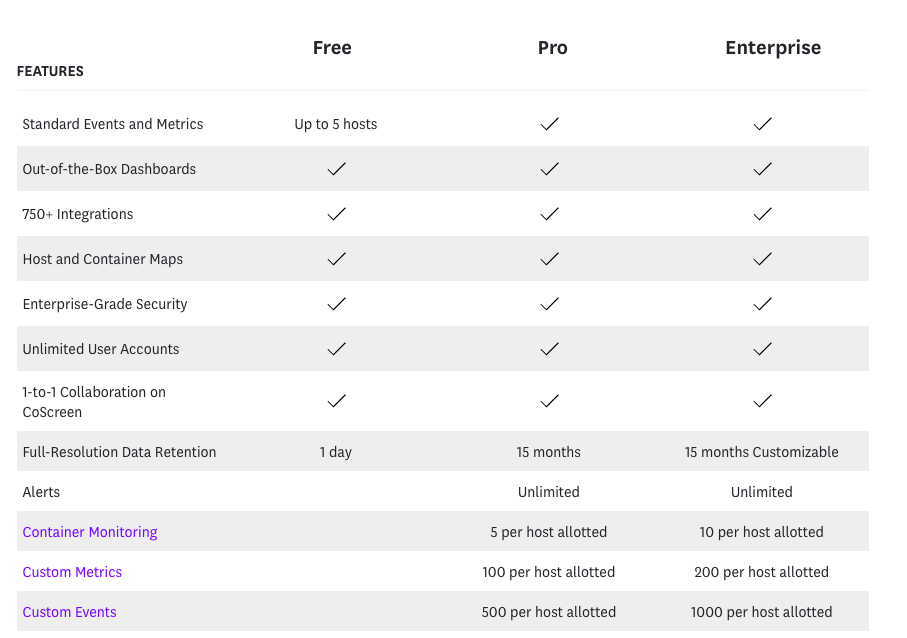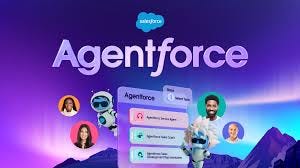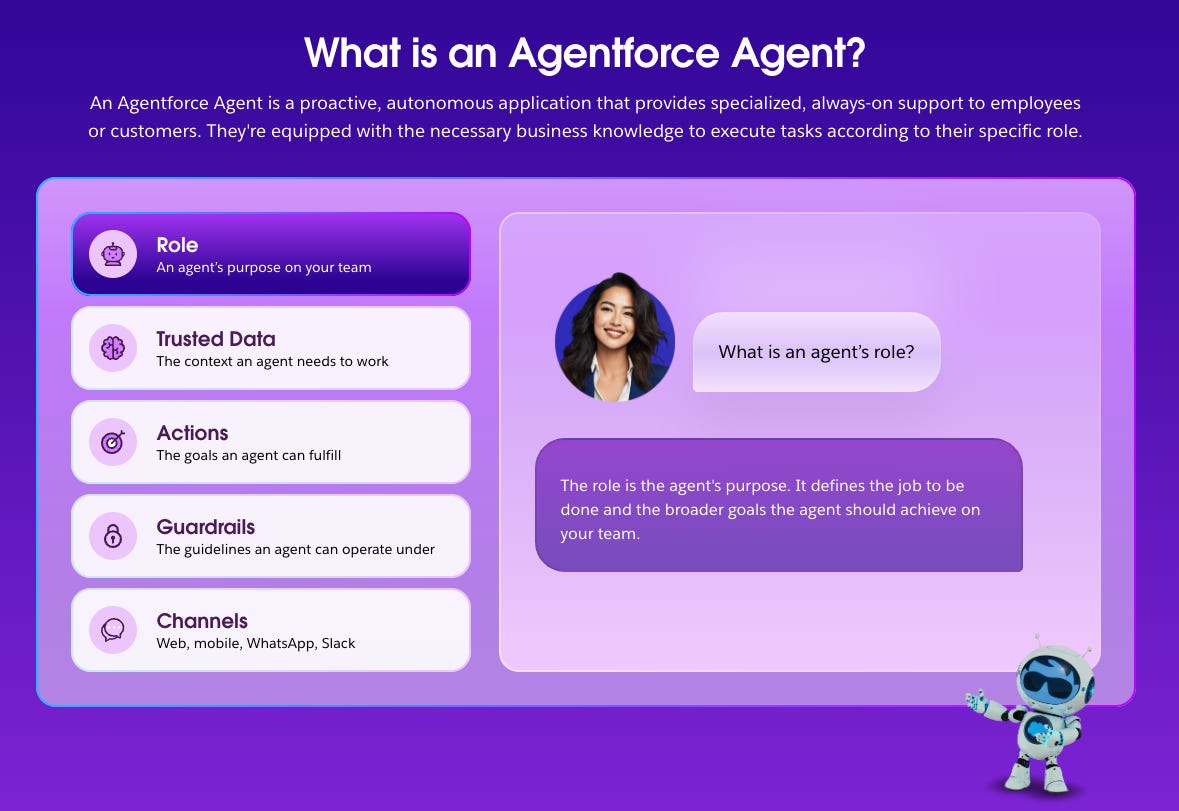From system of record to system of action
A bull case on why systems of records could win the agentic future
Wang Computers: A Billion-Dollar Giant Disrupted by the PC Revolution
Wang Computers, best known for its specialization in mini-computers and word processing, once dominated the computing market for typists. At its peak, 80% of the 2000 largest U.S. firms used Wang computers. Between 1970 and 1987, Wang grew its sales from $3 million to $3 billion. However, just a handful of years later, the company was hemorrhaging cash — declaring bankruptcy in 1992.
Wang’s initial success came from identifying an opportunity in smaller, more affordable, special-purpose computers before the mini-computer market even existed. It successfully transitioned from making calculators to minicomputers, focusing on the word processing market by selling to typists. Wang was a technology leader, riding high just as the microcomputer (personal computer) era began.
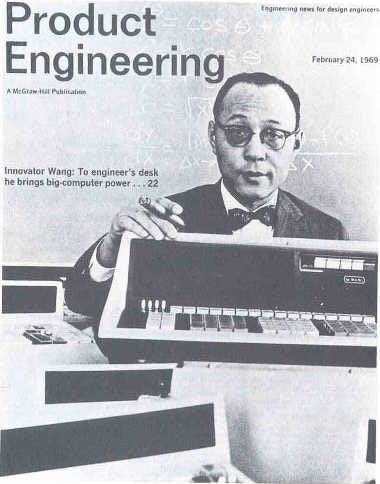

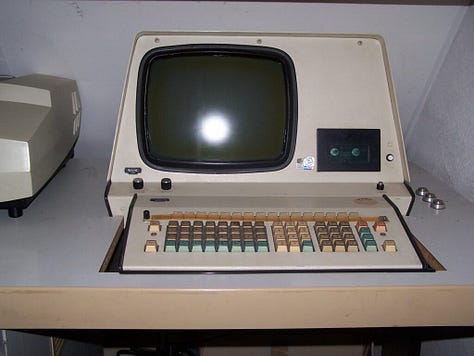
The personal computer revolution, which first took hold with spreadsheet programs, soon extended into word processing. By 1983, dozens of startups were offering word processing software, but only a few years later, the market consolidated to just three or four major players. Microcomputers (PCs) were cheap enough and capable enough that general knowledge workers — not just typists — started performing word processing. This shift in both platform and workflow left Wang Computers at a major disadvantage.
Wang had built its business model around selling machines priced close to $10,000 ($60,000 in 2024 dollars), while PCs were priced closer to $1,200. While Wang computers were used by specialized professionals, PCs quickly became accessible to everyone. As the personal computer revolution swept across industries, Wang found it impossible to compete with these more affordable, versatile machines. By 1992, the company declared bankruptcy and ceased to exist as an independent entity shortly thereafter.
Just as Wang Computers faced disruption from the PC revolution, incumbents today face ‘challenges from AI-driven systems.
Historical Disruption and Modern Parallels: Klarna’s Use of Generative AI
Fast forward to today, Klarna presents a potential for similar disruption caused by a platform shift — this time from traditional enterprise software to AI-driven systems. Klarna, a modern payments company, began leveraging GPT-3 to automate customer service. A year ago, they announced that this automation saved them the equivalent of 700 customer service representatives' worth of time. More disruptively, Klarna revealed that it had used Generative AI to replace two major systems of record — Salesforce and Workday1.
This move by Klarna signals a potential shift in the software landscape, much like the shift Wang faced in the 1980s. Traditional systems of record, long the backbone of enterprise operations, may now face competition from AI-driven platforms that can provide automation at scale.
Gen AI Presents a Challenge to Per-Seat Pricing
One of the major challenges facing Software-as-a-Service (SaaS) vendors today is the slowdown in ‘per-seat’ pricing expansions. Historically, SaaS companies relied on growing headcount within their client base to drive revenue expansion, as companies continued to add users. However, following the COVID-era boom in tech spending, many companies are now focused on staying lean, leading to headcount reductions and making it harder for SaaS vendors to achieve net expansion.
In the traditional SaaS model, each additional employee requires a software ‘seat.’ Therefore, workforce expansion has typically complemented SaaS software growth. Expensive professionals often relied on relatively affordable tools like Salesforce, which costs around $300 per year per seat. However, in today’s environment of reduced headcount, the traditional per-seat pricing model is under increasing pressure.
SaaS Challenge Navigating from 'Per-Seat' to Consumption-Based Pricing
To adapt to this shift, SaaS companies must transition from per-seat pricing to a consumption-based model. Many companies already use this model for certain software, particularly developer tools and marketing technologies (including adtech), where costs are based on usage rather than user count. Below is an example of Datadog’s pricing on container monitoring, custom metrics, and custom events.
Consumption-based pricing typically includes a platform fee, plus variable costs based on the amount of work performed (e.g., cost per email sent or API call made). While this might seem like a shift, most businesses are already accustomed to paying for some software in this way. The move to consumption-based pricing mirrors the software industry's previous transition from perpetual license fees to subscription-based models when shifting from on-prem to cloud-based solutions. Though not without its challenges, this shift is entirely feasible.
Software Strategy: Commoditizing the Complement
One of the most well-known strategic approaches in the software market is the concept of "commoditizing your complement." This strategy involves making complementary products extremely cheap, lowering the barriers to purchasing your core product. A well known is example is Microsoft partnering with PC manufacturers like Compaq to drive down the cost of hardware, opening up the market for Microsoft’s software.
Historically, SaaS tools have complemented human workers. A business might pay $60,000 for a customer service agent, alongside a few hundred dollars for the software tools to support them. However, agentic systems — powered by AI — may flip this dynamic on its head.
In the traditional per-seat SaaS model, companies needed to employ expensive human workers to get value from the software. With agentic systems, fewer or no human workers are required. AI agents can now interact with customers, process workflows, enter data, and perform other tasks that were once human-driven.
Effectively, humans — the complement to software — are becoming commoditized. This means that the portion of budgets historically allocated to headcount may now be available for investment in advanced software solutions.
AI Agents and the System-of-Record Advantage
At recent industry conferences, Salesforce Dreamforce and Workday Rising, both companies introduced AI agents designed to enhance their systems. Marc Benioff, Salesforce’s CEO, unveiled "Agent Force," a next-generation AI tool designed to leverage the company’s vast data resources.
Systems of record like Salesforce and Workday hold significant advantages in this AI shift:
They have your data.
They understand your workflow.
They’ve logged tens of millions of specific transactions, unique to your company.
One key challenge for AI agents has been the availability of training data. Salesforce solves this problem by leveraging the wealth of customer data it already holds — including sales, outreach, customer service, and marketing campaign data. Workday, in turn, has rich data on talent acquisition workflows and HR administrative processes.
For instance, if you ask Workday to "take these days off for me," Workday already has the data flow to manage that request:
Time off > PTO > selected days > submit.
Robotic process automation has historically struggled with the availability of training data and the intelligence to determine when to act. Systems of record not only have this data, but they also possess the operational context required to drive AI automation. Some systems even contain the company documents necessary for AI agents to make informed decisions.
This shift could turn systems of record into "systems of work," where AI agents are automate tasks based on historical and transactional data. (I don’t know why, but I picture systems-of-records as aircraft carriers, powering a fleet of AI agents, see gratuitous image below.)
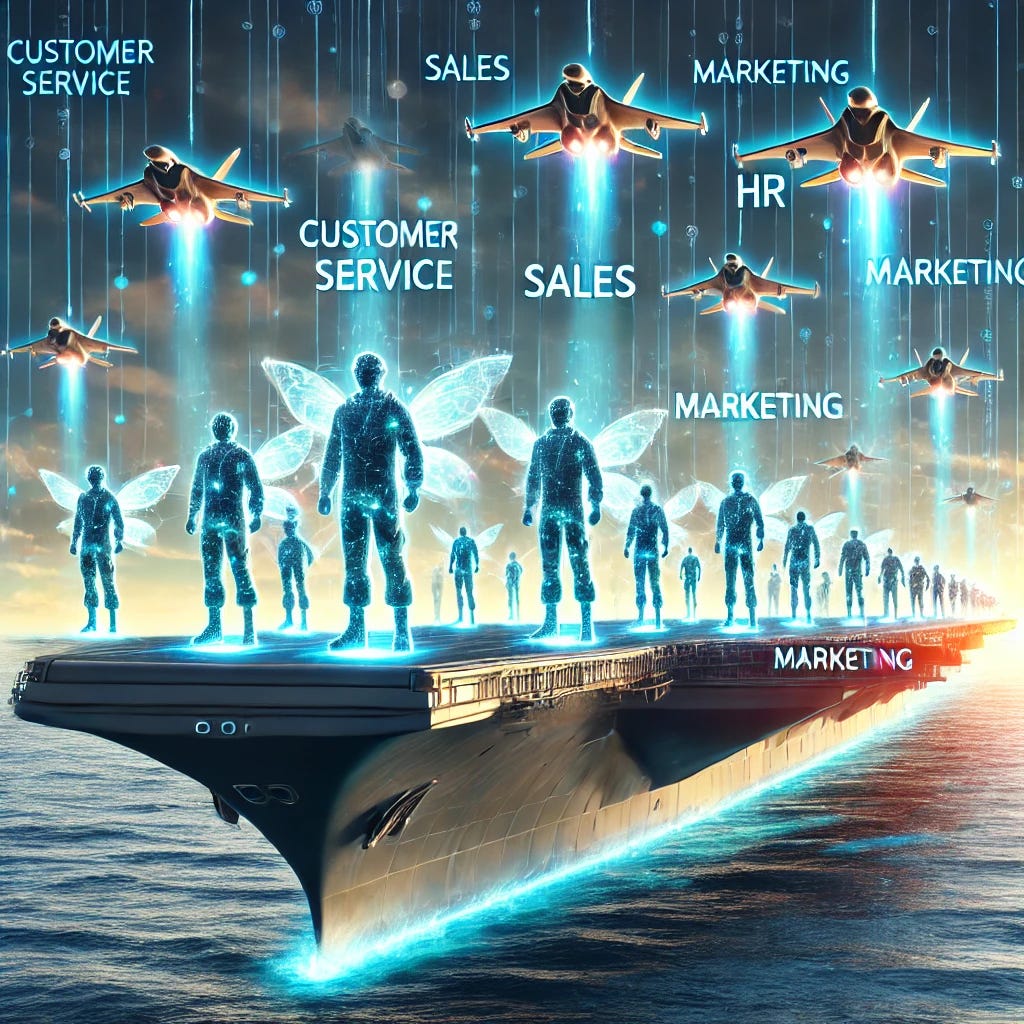
Systems of Record as Systems of Work
The transition from a system of record to a system of work could open up new market opportunities. This would be similar to Microsoft’s transformation from an operating system provider to a dominant player in collaboration software with products like Office and Teams.
Not all AI agents will reside within systems of record, however. Some will need to operate across multiple platforms, meaning that agents will require interoperability across a range of software systems.
Nevertheless, systems of record are well-positioned to become the foundation through which many companies adopt AI agents, fundamentally transforming business operations in the process.
https://www.campaignlive.co.uk/article/klarna-ditches-salesforce-plans-cut-workforce/1888842




